If you’re an overlander, (or truck driver, or live in an RV), you spend a significant amount of time driving. It’s easy to neglect your health. Some of the health risks drivers face are:
- Obesity,
- Heart disease,
- Diabetes,
- High blood pressure,
- Depression.
The lack of general routine can also lead to neglecting your exercise routine.
Exercise improves both mental and physical health. Overlanders should make an effort to establish a routine and exercise daily to avoid these health risks.
Doing aerobics every day continuously works on your larger muscle groups, gets the blood flowing, and maintains a natural rhythm.
If you spend just thirty minutes a day exercising, you’ll gradually improve your health. After a long day of sitting in your cab, even stretching helps strengthen your muscles.
The long hours you work are very tough. You don’t have to tackle it all at once. Take small steps to accomplish your health goals. Improving your diet combined with exercise will help you on your journey to living healthy.
Below are ten exercises you can do daily while on the road. These exercises work all the muscles in your body, including your lower back.
For drivers, working on the lower back is essential. One of the leading causes of drivers experiencing lower back pain is sciatica.
Oddly enough, sciatica doesn’t start in your back. The sciatica nerve is on the back of your leg. Sitting for long periods can pinch the nerve.
Now, let’s explore ten exercises you can do while out on the road driving. To decrease your chance of getting injured, warm-up before you exercise. It also:
- Reduces muscle tension
- Increases the flow of oxygen and blood
- Gives you a better range of motion
- Increases your flexibility
- Prepares your muscles for exercise
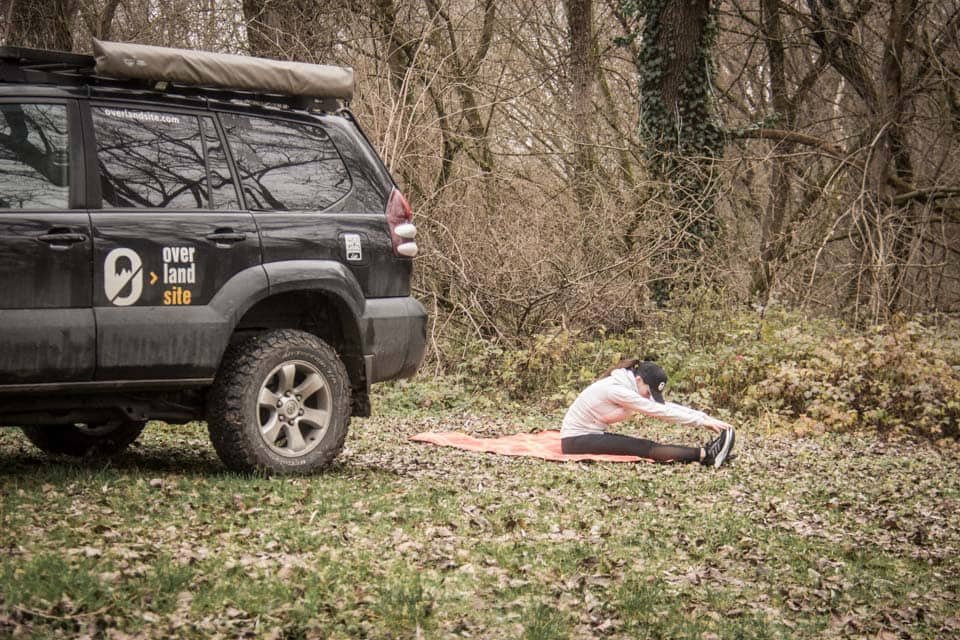
1. Warmup
First, start by stretching. While standing, take the tips of your fingers and touch your toes. Hold this position for ten seconds, then release. Do this stretch five times before moving forward.
Also, wait ten seconds between stretching to rest your muscles. Next, sit on the ground with your legs crossed.
Lean forward as far as you can and hold for ten seconds. Do this stretch five times before going to the next step.
After stretching your arms, legs, and lower back, run in place for two minutes. Running in place will get your heart pumping and blood flowing.
You can use resistance bands while stretching or jump rope instead of running.
After that draw 10 circles in the air using every part of your body going from your head down to your ankles.
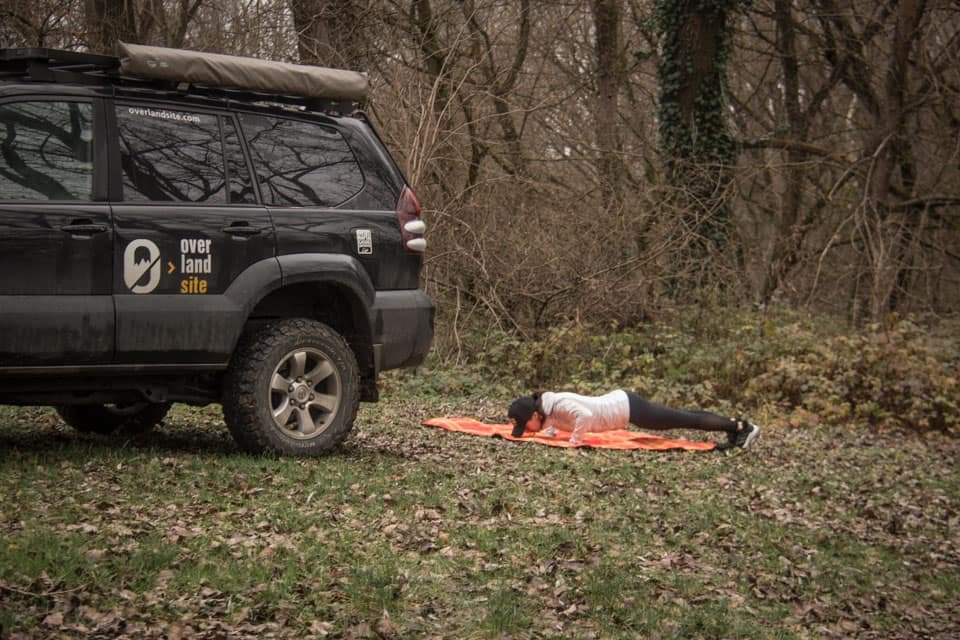
2. Push-ups
This exercise works your core, arms, chest, and shoulders. Push-ups give you an overall rating of your fitness. You can gauge whether you need to work out more.
To do a push-up, get on the ground on all fours. You want to position your hands out wider than your shoulders.
Extend your legs straight out and balance your body weight on your toes and hands. Keep your body straight. Don’t sink or arch your back. For every push-up, keep your core tight.
When you bend your elbows to go down, inhale slowly. Exhale as you lift yourself back up. Never lock your elbows. For starters, do ten sets of five. When you get stronger, add more reps.
As an alternative to push-ups is the TRX Chest Fly. If you have a resistance band, anchor it and face away from it. With both hands, grab the resistance band and extend your arms. Lean forward and spread your arms out like a T.
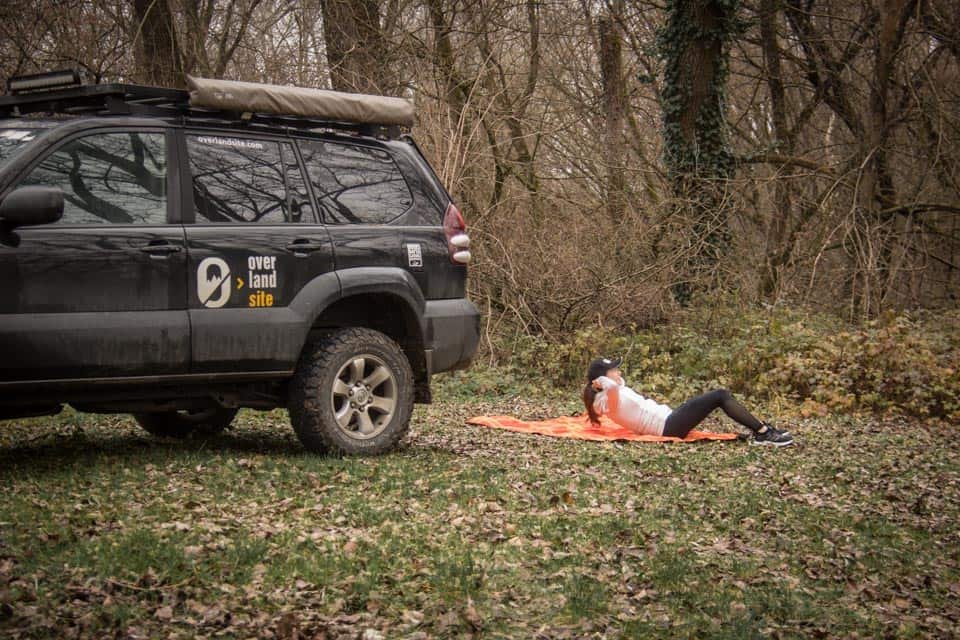
3. Sit-ups
Sit-ups work your core, neck, chest, and obliques. Doing sit-ups helps to balance your body. The muscles in your hips and stomach become stronger. Also, the muscles in your legs, abdomen, and arms become more stable.
Sit-ups are a perfect exercise to maintain your posture. Sitting all day can change your posture. Sit-ups are a cost-effective way to give you perfect posture.
Lay on your back and bend your legs. Place your feet flat on the ground. Cross your arms on your chest or behind your head. Do whichever is more comfortable for you.
If you place your hands behind your head, don’t pull on your neck doing sit-ups. Bring your upper body up to your knees and exhale while you lift.
When you lower your body back down, inhale slowly. Do ten sets of five. Allow your body to tell you when you’re strong enough to add more reps.
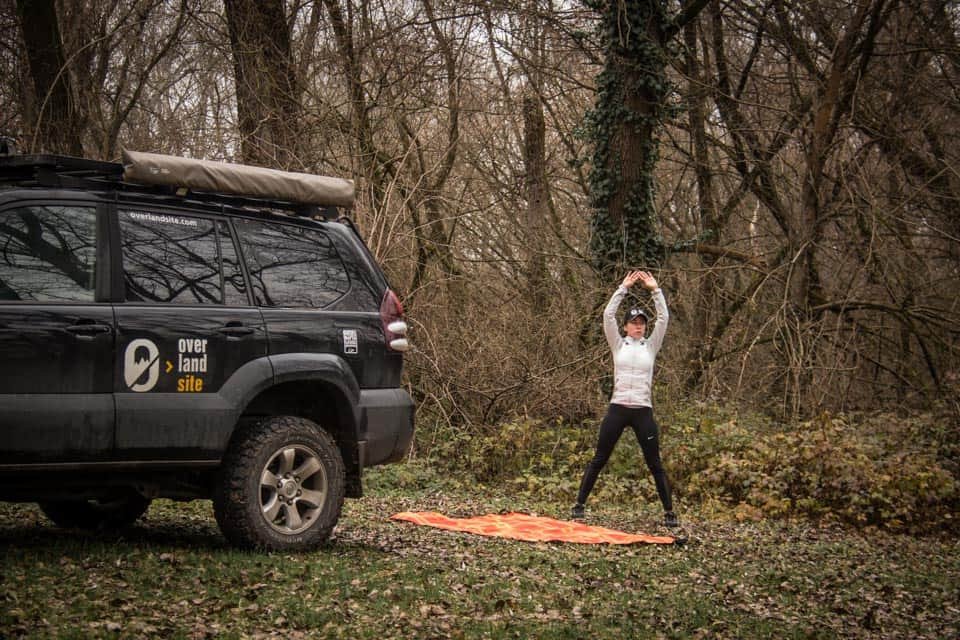
4. Jumping Jacks
Jumping jacks give you a full-body workout. They target all your major muscles. You can do them anywhere, and you don’t need any equipment. Jumping jacks is a cardiovascular workout.
It is also called a plyometric exercise. Plyometrics are explosive and involve jumping. They increase power, quickness, and speed. Jumping jacks can also be beneficial to your bones.
By doing a regimen of jumping jacks every day, you’ll be strengthening your bones and lower back. Over the years, we lose bone density. Mitigate the loss with jumping jacks.
Stand up, put your arms down by your side, and keep your legs together. Bend your knees and jump. When you jump, spread your legs apart.
Raise your arms, in the air, over your head simultaneously. Jump again, and return to the position you started in. As with all the exercises, do ten sets of five until you’re comfortable doing more.
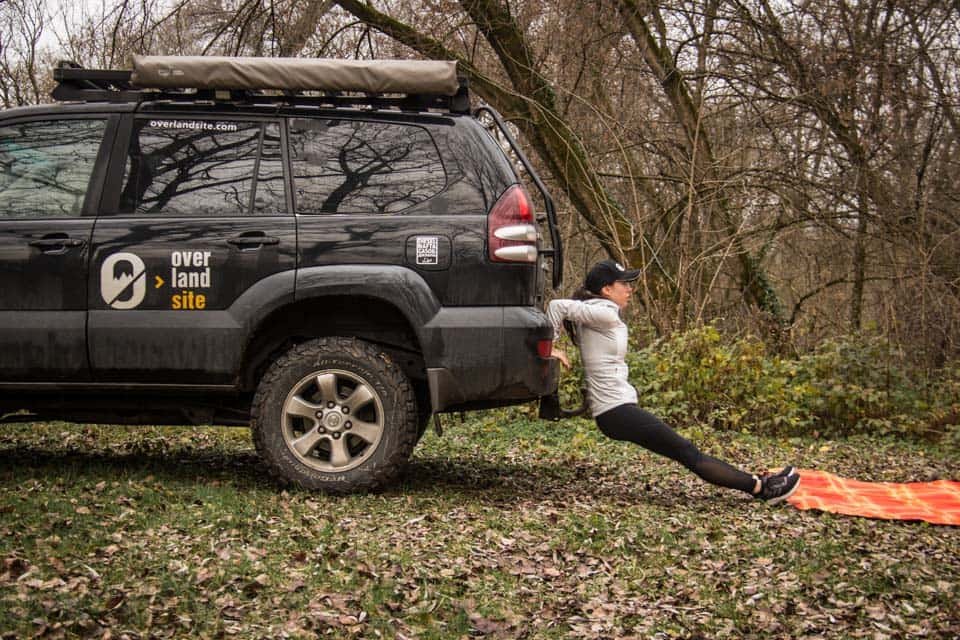
5. Dips
Dips are a compound exercise that uses your body weight. They work your anterior deltoids, chest, and triceps. Dips strengthen the whole upper body.
Other resistance exercises only work one muscle. You don’t need a gym to do this exercise. You can do them anywhere.
You can use the front or back bumper of your truck or an even lower platform for this exercise. To do a dip properly, turn your back to your truck. Put your legs out in front of you, and put your hands on the bumper. As an alternative, you can use any of the following as a platform: a spare tire, cooler box, Wolf Pack-type box, etc. But make sure the platform is stable!
Most of your body weight should be on your arms. Bend your elbows and dip down until your glutes touch the ground. Lift your body back up. Don’t forget to lock your elbows when you lift.
Resistance extensions benefits are the same as dips. It’s a great alternative. Put your right foot in front of your left foot. Put the band under your left foot. Extend your arms up and put the bands behind your head. Lower your arms to complete the rep.
6. Pull-Up/Kneeling Lat Band Pull Down
This exercise works your biceps and lats. You’ll need your resistance band and anchor point for this exercise. As an overlander, you’re on the road all the time.
You may need to work out where the gym isn’t an option. Luckily for you, this exercise is an alternative to pull-ups. Both pull-ups and Kneeling Lat Pull Downs use the same range of motion.
Your lats are getting worked identically the same way. You can customize your workout to adjust to your fitness level.
With your palms facing down and out, grab your resistance band. Kneel on one knee and raise the resistance band above your head.
Exhale, and bring your hands down to your shoulders. Inhale, and bring your hands back above your head. Do ten sets of five like each exercise.
Featured Articles
7. 30-second sprints
When you add sprints to your exercise plan, it helps you get fit faster. 30-second sprints are intense. You’ll be impressed with the results. This exercise is perfect for people on the go like you.
You’ll get the same cardiovascular benefits as someone who works out for a longer time. These short explosive runs will improve your endurance and muscle health.
Sprints also burn calories rapidly. You can combine sprints with any other cardiovascular exercise in your routine. It’s recommended to sprint three times weekly.
For your first sprint, don’t run at max speed. If you feel tightness or joint pains, go back and stretch. After each sprint, recover by slowing down to a comfortable pace.
While you slow down, never stop moving. For your next sprint, run at a faster speed, but still not max speed. The recovery time between each sprint is two minutes.
For the final three sprints, you do, run at max speed for thirty seconds. These are the sprints that you’ll be giving max effort.
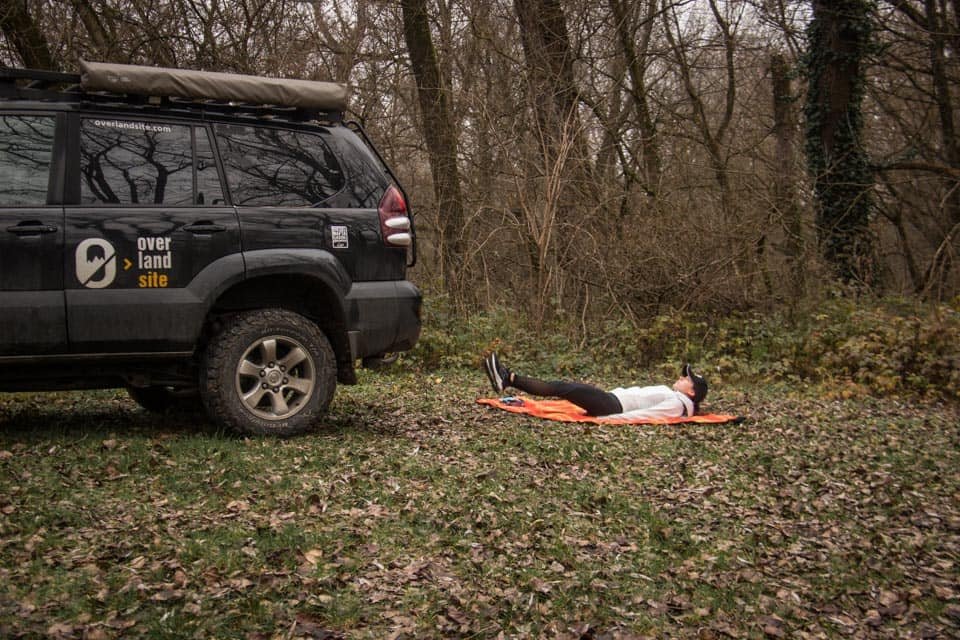
8. Six inches
Six inches is an isometric exercise that strengthens the abs. This exercise directly targets the abdominal muscles.
The movement required is simple, and you don’t need any equipment. For the best results, combine this exercise with a balanced diet.
Lay on your back. Fully extend and keep your legs straight. You can put your hands under your back or at your sides. Where you place your hands will give you extra support. Point your toes upward.
Tighten your abs, put your feet and legs together, and raise your legs six inches off the ground. As you lift your legs, exhale. Hold that position for thirty seconds. Inhale, then lower your legs.
To start, do ten sets of five. Gradually work your way up as you get stronger. Don’t forget to take small breaks between reps to give your body rest. Before targeting your abs again, rest for twenty-four hours before training.
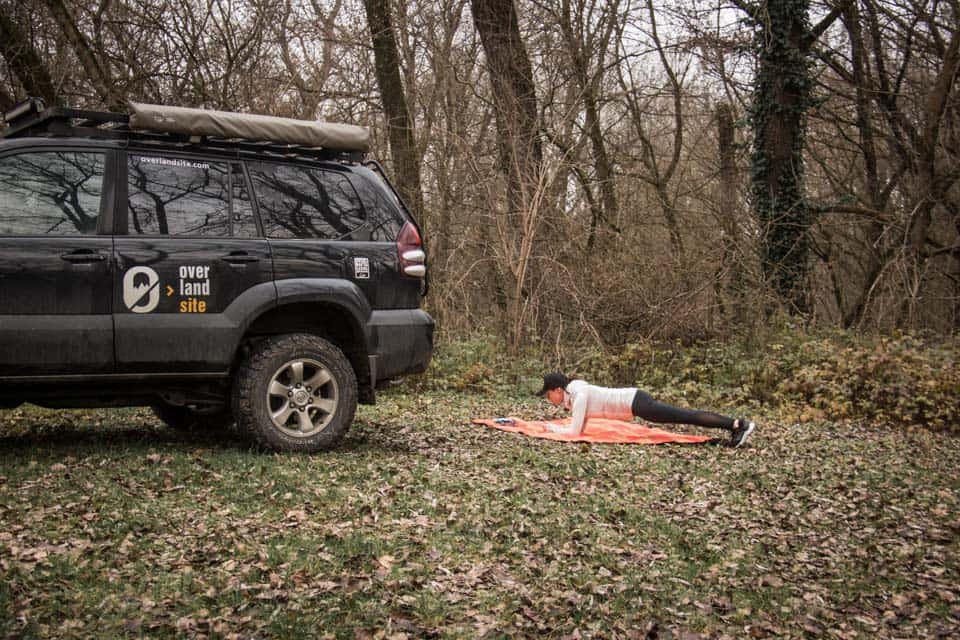
9. Planking
The plank is another isometric exercise that targets the back and abdominal muscles. When you do planks correctly, they also target your glutes, shoulders, quads, and chest. In the plank position, keep your core engaged.
Don’t dip or raise your hips in the are. From head to toe, stay aligned. Having good form for your planks are essential. It makes exercising easier. Using proper form will help you avoid injury.
Get on all fours with your hands flat on the floor. Place your hands at shoulder-width. Lift your knees off the floor and extend your legs. Support your body with your legs and arms.
This position is called a high plank. It’s one interpretation of the plank exercise. Forearm planks are more challenging.
From the high plank position, slowly lower yourself one arm at a time onto your forearms. Hold each plank position for thirty seconds. Start with ten reps.
10. Prone Back Extensions
Strengthening your lower back could be the single most important part of your exercise routine as an overlander.
Lay down on the ground and put your hands behind your back as if you’re about to get arrested. With this exercise, focus on raising your chest off the floor.
At the end of the motion you should be contracting your upper back, contracting your lower back, and some glutes and maybe a little bit of your hamstrings and your quads.
Try to to hyperextend your neck and flick your head up first. If you flick your head first and hyperextend your neck you’re going to be over-activating your upper traps.
Another variation of your exercise is to put your hands in front of you. This will create extra torque on your lower back, therefore making the exercise a lot harder.
By having your arms in front of you, you’re going to be adding more body weight onto your rhomboids and your mid traps and your lower back. It creates more torsion in your lower back and other muscles that help you extend your back.
This is also known as the Superman position as it makes you look like you’re flying in air!
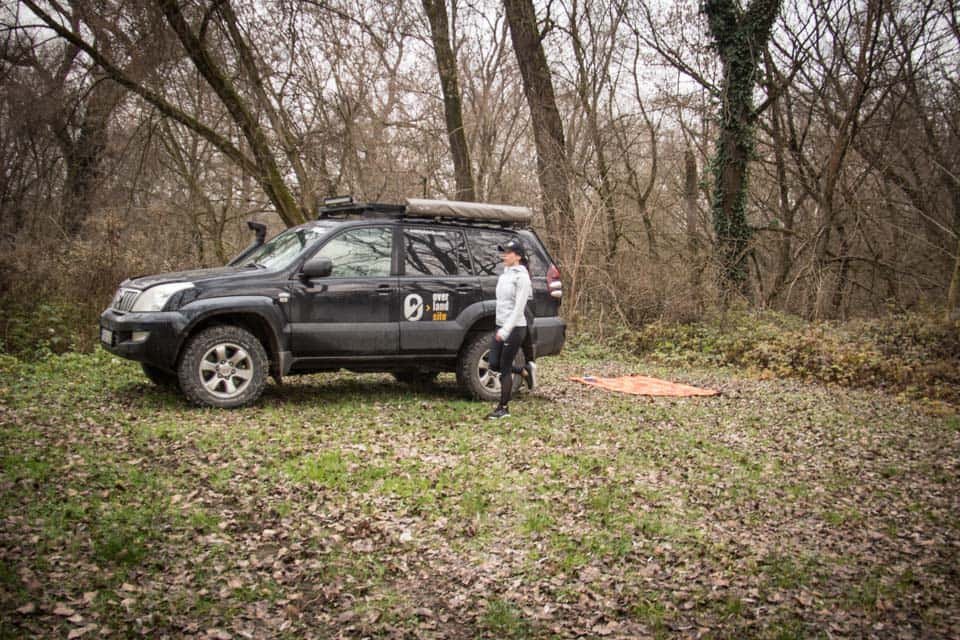
Walk it off
The best time to walk is after exercising. You would’ve burned off a lot of glycogen. When you walk, it should be brisk. Find a hill or incline and use it for five minutes to start.
While you’re doing this exercise, don’t stop. The exercise focus is Happiness Walk. This walk helps to relieve stress and revitalize your mind.
The longer you walk, the better you feel. Mental health is crucial in overall health.
Stay focused on your feet for three minutes. Roll your feet from heel to toe, and feel the ground beneath you. Now, focus on your breathing. To increase your lung space, stand upright.
As you inhale, take in positive energy. As you exhale, release negative energy. As you walk, in your mind, speak positivity into your life. Saying an affirmation you’ve memorized will help you stay focused.
While on the go, smartphone applications are a great way to track your progress. Here are two great apps for drivers.
Apps That Can Help You
Nike Training Club
Nike’s fitness app is one of the best out there, and it’s free. You can do these workouts anytime and anywhere. The app offers you a structured workout plan.
When you download the app, you have to take a quiz. It asks you how often you work out and the exercises you like to do. Some of the programs you can choose are:
- Yoga
- Weightlifting
- Bodyweight training
Most of the programs on this app take four to six weeks to complete. Different stages are depending on your workout. The best way to utilize this app is by following the programs.
One workout tab allows you to choose exercises for specific muscle groups. In your activity tab, you can check the records of your workouts.
You receive trophies for the goals you accomplish. You can follow one work out at a time, and progress, as you get stronger.
BodBot Fitness Coach
BodBot is your virtual personal trainer. If you’re an overlander, this app is for you. You can customize the difficulty, goals, and use of equipment.
BodBot gives you a step-by-step guide to do each exercise. This app has the most advanced bodyweight training programs around. You can use this app to work out anywhere.
Although your schedule is busy, you will still see results with this app. By following an exercise program, you’ll build muscle, improve fitness, and have more endurance.
Your training plan maximizes your fitness gains. Bodbot is just as good as having a trainer. This app creates an individual program for you, then adapts to your progression.
Where you lack, the app corrects it for you. BodBot connects to Fitbit, Google Fit, and Apple Health. It also has a food plan.
Your meal plan is foods recommended that will help you reach your goals. Find the right diet to complement your exercise regimen.
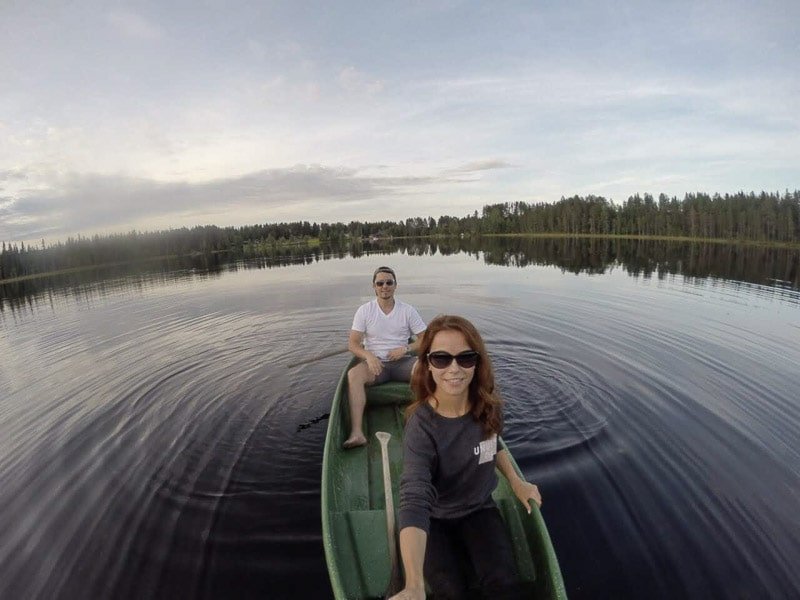
Working Out Regularly = Long-term Health Benefits
We all dread working out. Getting into a habit of working out has long-term health benefits. When you work out regularly, it makes you feel happy.
Decreasing stress is one of the benefits of exercise. You’ll also lose weight and be healthy. Regular exercise is one of the three ways your body spends energy.
It supports your metabolism and burns calories. When you exercise, your body releases hormones that help your muscles consume amino acids. The older you get, the more muscle mass you lose.
Your chances of being injured are greater. Increase your energy level by exercising. If you suffer from persistent fatigue, exercise will boost your energy.
Do you have any other exercises or apps to recommend? Put them in the comments below!


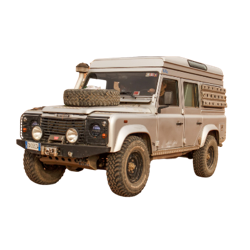
Madbarz is also a great app for bodyweight training. It’s not a free app but it has great training plans and has short but hard training sessions lined up. It works really well for me!